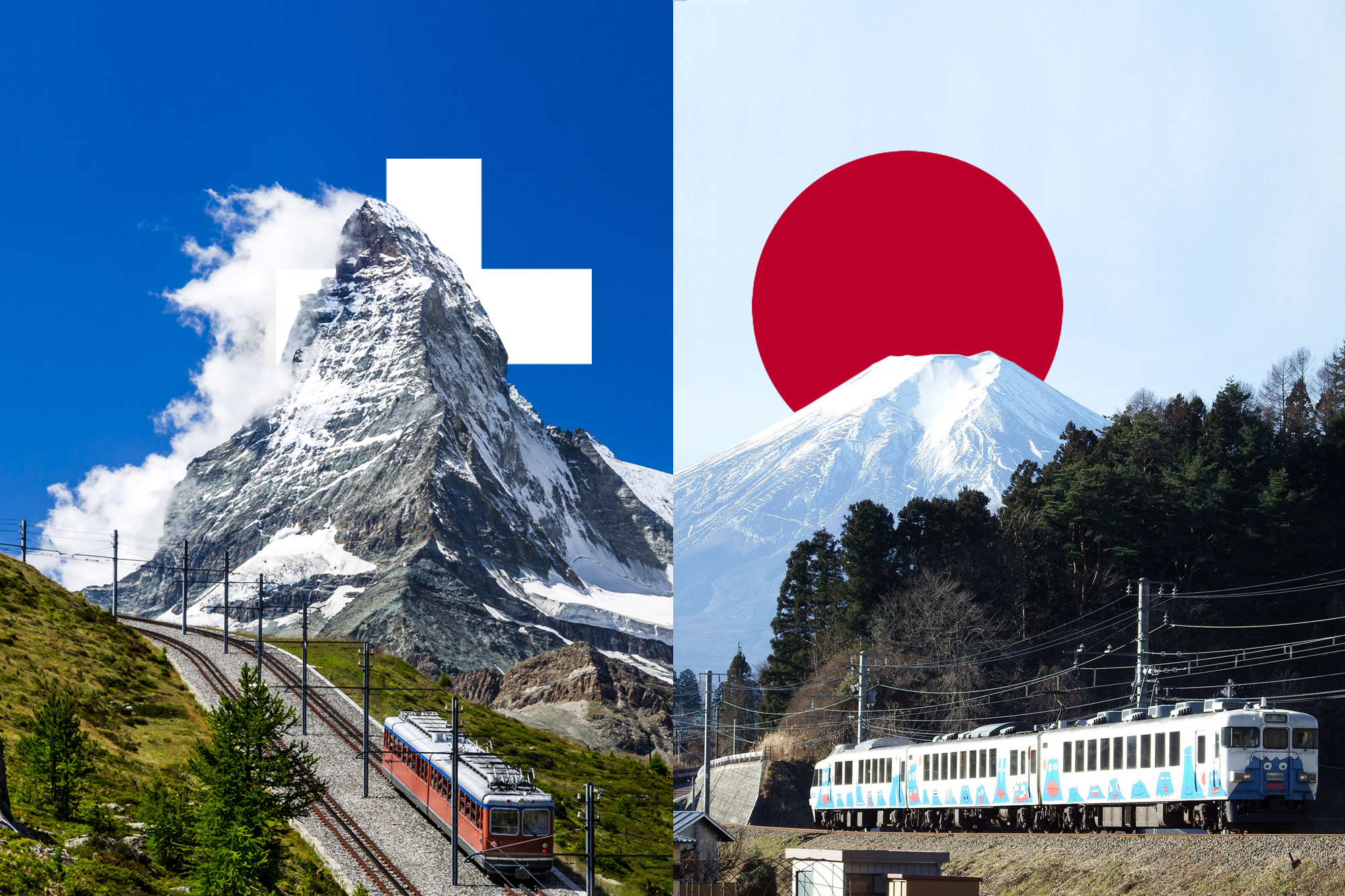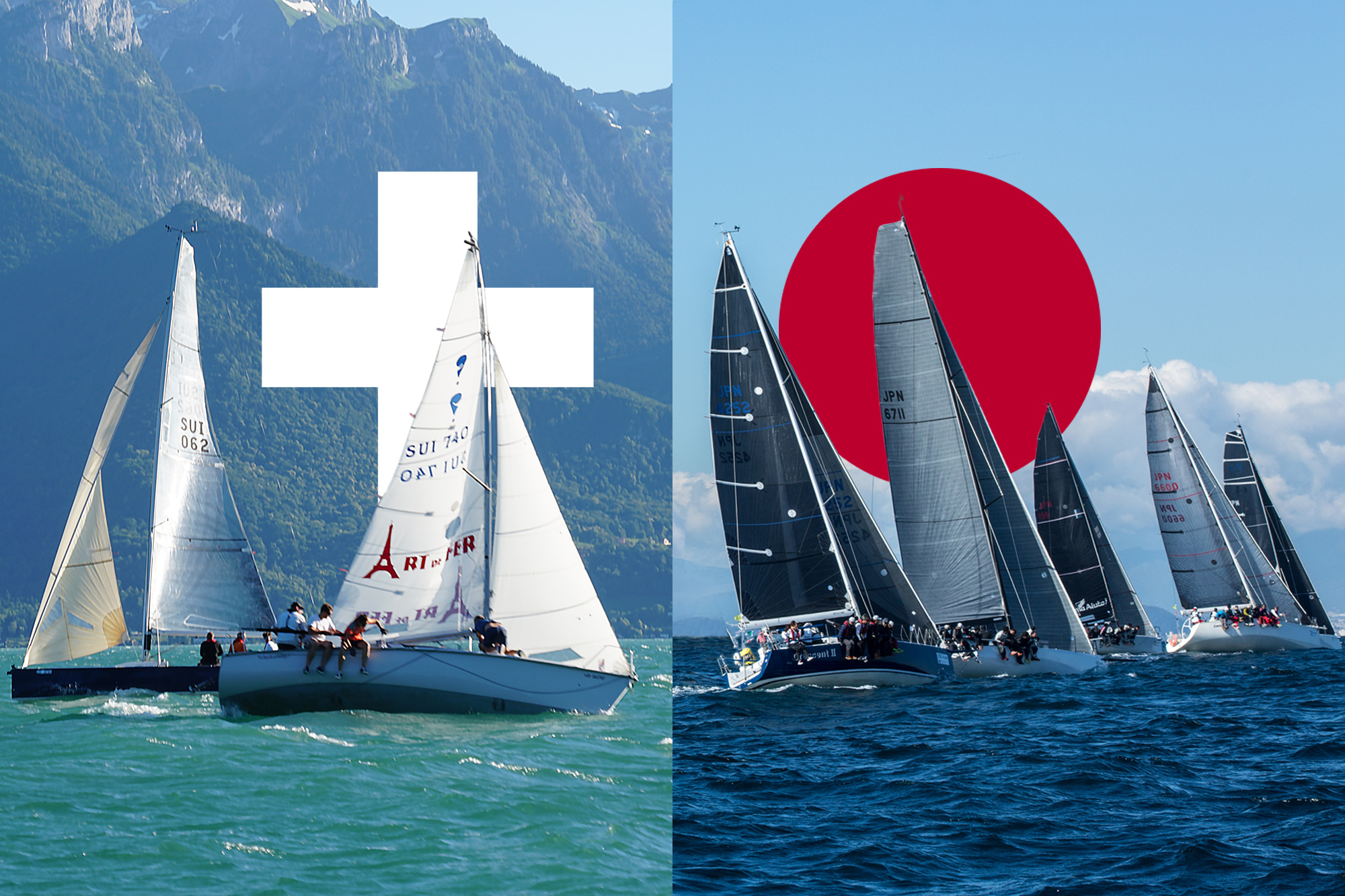-
 (©Embassy of Switzerland in Japan)
(©Embassy of Switzerland in Japan)
-
 (©Rhaetian Railway Inc.)
(©Rhaetian Railway Inc.)
-
 (©Hakone Tozan Railway Co., Ltd.)
(©Hakone Tozan Railway Co., Ltd.)
Hakone Tozan Railway ― Rhaetian Railway (1979)
Kanto | Hakone Town
Train & Transportation
The first Japanese mountain railway was inspired by Switzerland. Since 1979, this historical tie is celebrated by two iconic local railway companies.
A strange choreography
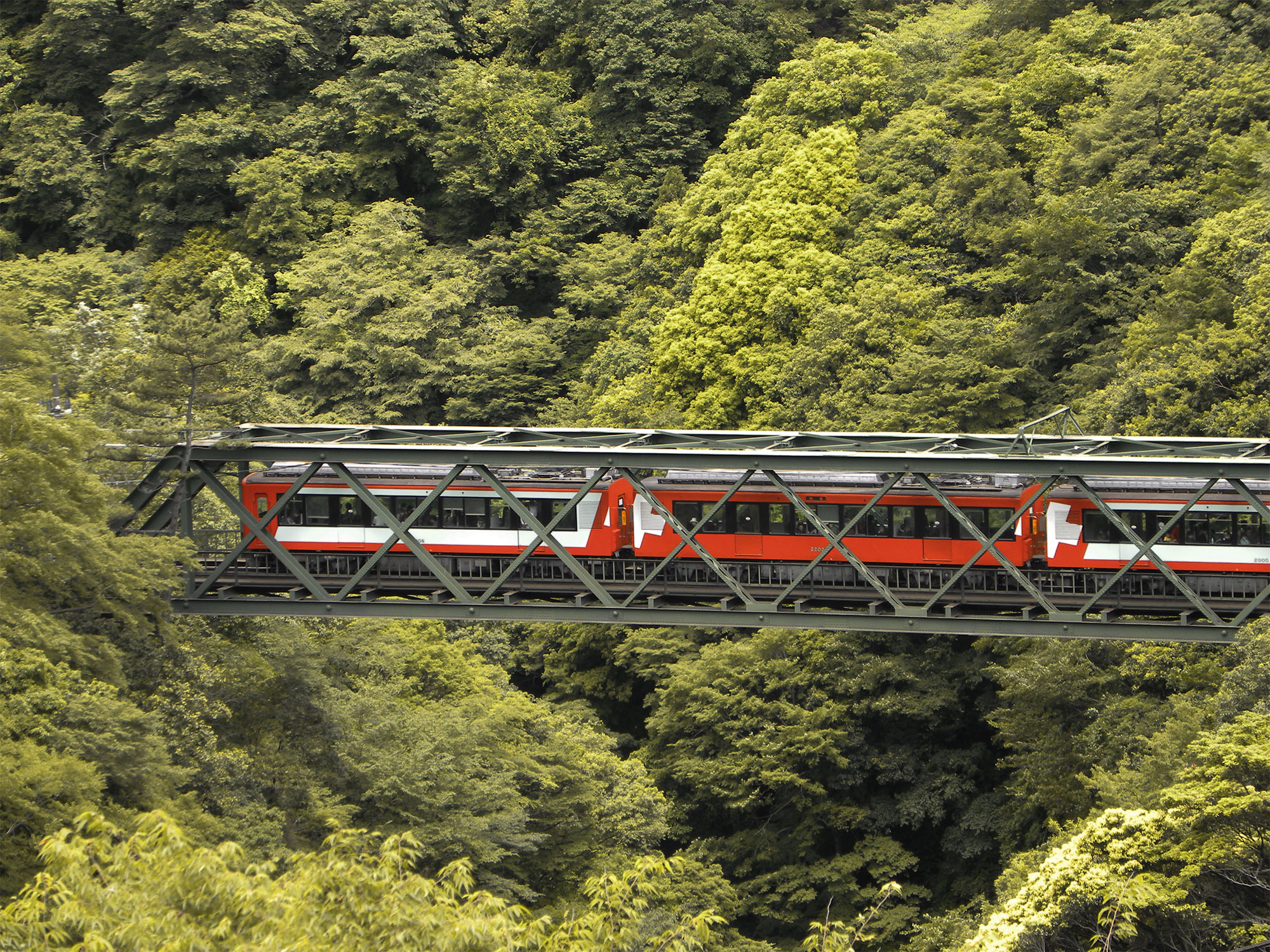
Crossing the "Deyama Bridge" (©Hakone Tozan Railway Co., Ltd.)
Successive generations of travellers who have visited the area surrounding Mount Fuji tend to agree: getting to Hakone is certainly just as exciting as Hakone itself! For the past hundred years, the famed Japanese town has been accessible in approximately 40 minutes thanks to the Hakone Tozan Railway (owned by the Odakyu Group). Consisting of a train and a funicular, the railway guarantees its passengers memorable natural landscapes along their journey, from full-bloom hydrangeas to romantic autumn foliage.

The "switchback" of the Hakone Tozan Line
Running between Hakone-Yumoto (96 meters) and Gora (541 meters) with occasional steepness peaks of 8%, the Hakone Tozan train is also famous among railway enthusiasts for having a unique technical feature: switchback stops, in which the driver and conductor switch seats since the train follows a zig-zag route. How did the Japanese company come up with such a system? To find out, let us follow the steps of a 20th century Japanese engineer on his way to eastern Switzerland.

A locomotive of the Hakone Tozan Railway proudly displaying the blazon of Graubunden, a large mountainous canton in Eastern Switzerland (©Hakone Tozan Railway Co., Ltd.)
Learning from Swiss engineering
In 1912, Mitsugu Handa, a Japanese engineer at the predecessor of Hakone Tozan Railway, visited Switzerland to learn about mountain railways. More particularly he rode the Bernina Railway in the canton of Graubünden, which impressed him both for its technicality (notably the switchbacks method) and for its amazing alpine landscape. Having taken notes of what he has witnessed, Handa returned to Japan and started designing his country’s very first mountain railway: a 8.9-kilometer route inaugurated seven years later in Hakone. The new electrified mountain railway (600 V DC at the time) highly contributed to the popularity of the mountain town, making it to this day one of the country’s most popular destinations for inbound and outbound tourists.
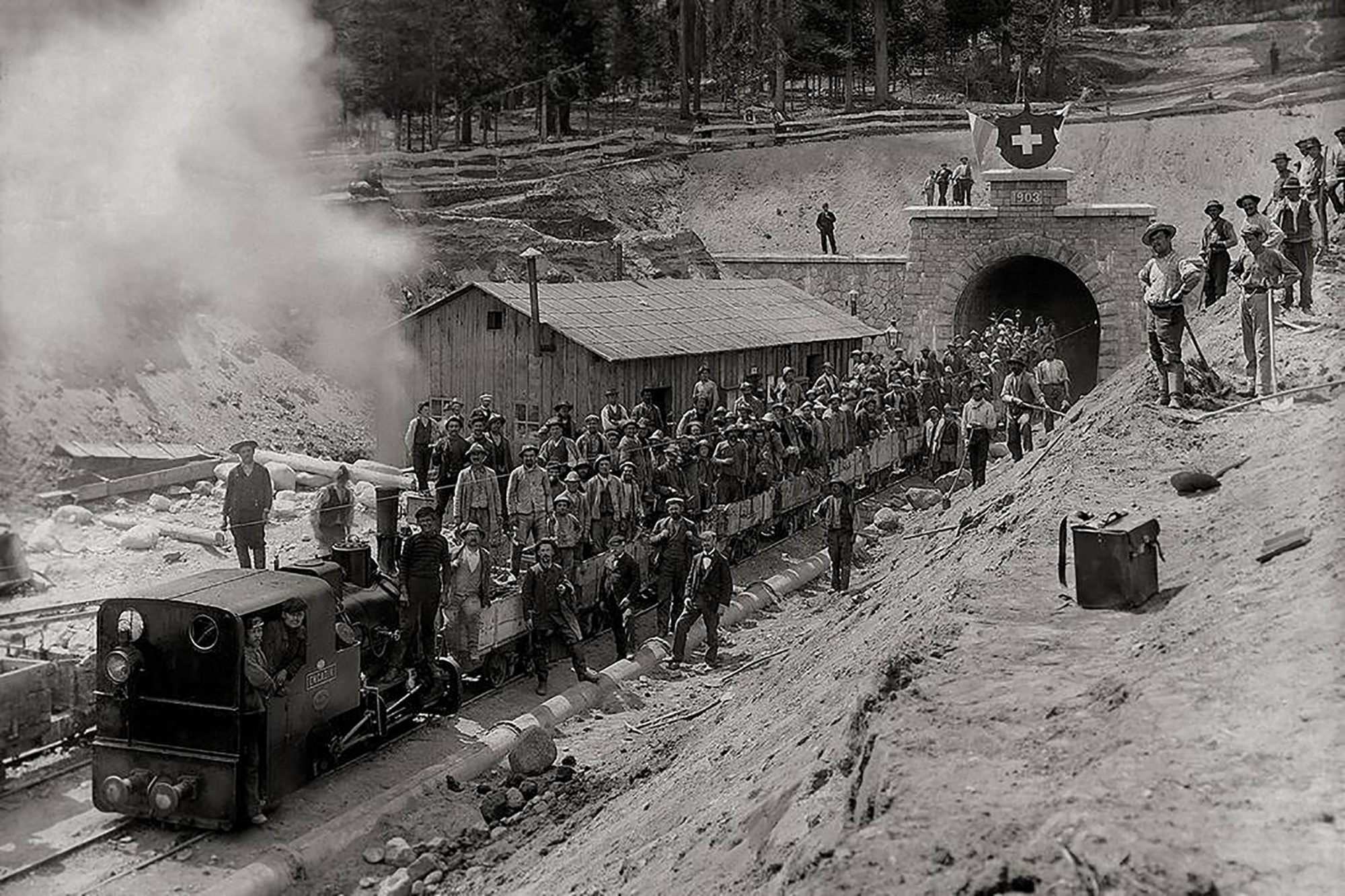
Change of shift at the south entrance of the Albula Tunnel - circa 1900 (©Rhaetian Railway Inc.)

The cowbells of friendship offered by the Swiss company to Hakone Tozan Railway (©Hakone Tozan Railway Co., Ltd.)
On June 1, 1979, to celebrate the 60th anniversary of the opening of its renowned route, Hakone Tozan Railway therefore went “back to its roots” by signing a sister railway partnership with Rhaetian Railway, which had since integrated the Bernina Railway in its network. Since then, on several instances, both train lines have harbored Swiss and Japanese names and designs (from white crosses to sakura flowers) on their red cars, and their officials have frequently collaborated to promote each other’s regions as tourist destinations. In 2014, the links created between the two local Swiss and Japanese communities after 35 years of railway partnership logically led to the signature of a friendship-city alliance between Hakone and St. Moritz, the terminal of the Bernina Line!
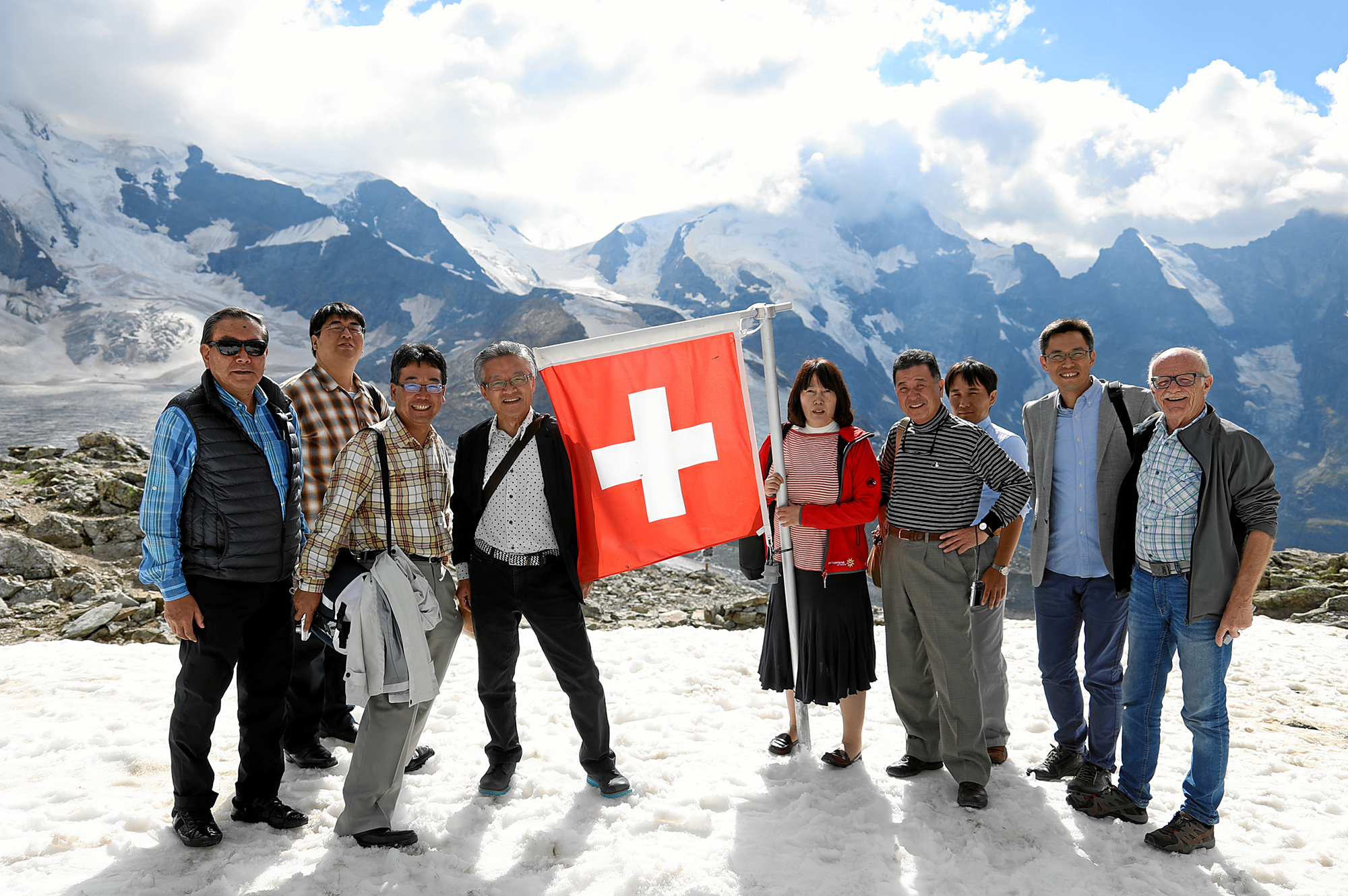
2016: Visit of a Japanese delegation from Hakone Tozan Railway to Switzerland (©Rhaetian Railway Inc.)
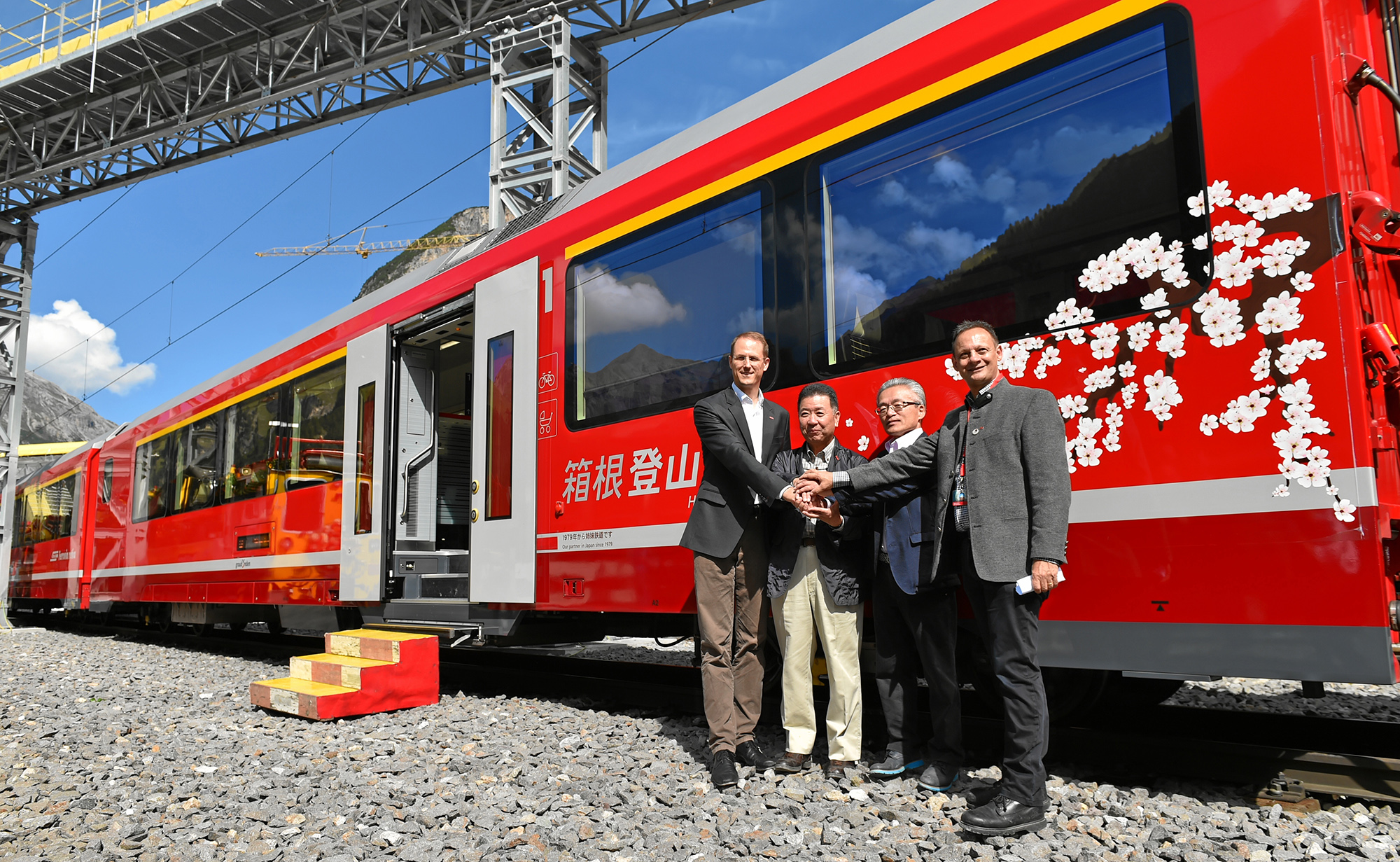
2016: Unveiling of a limited Rhaetian Railway vehicle paying tribute to its Japanese sister railway (©Rhaetian Railway Inc.)
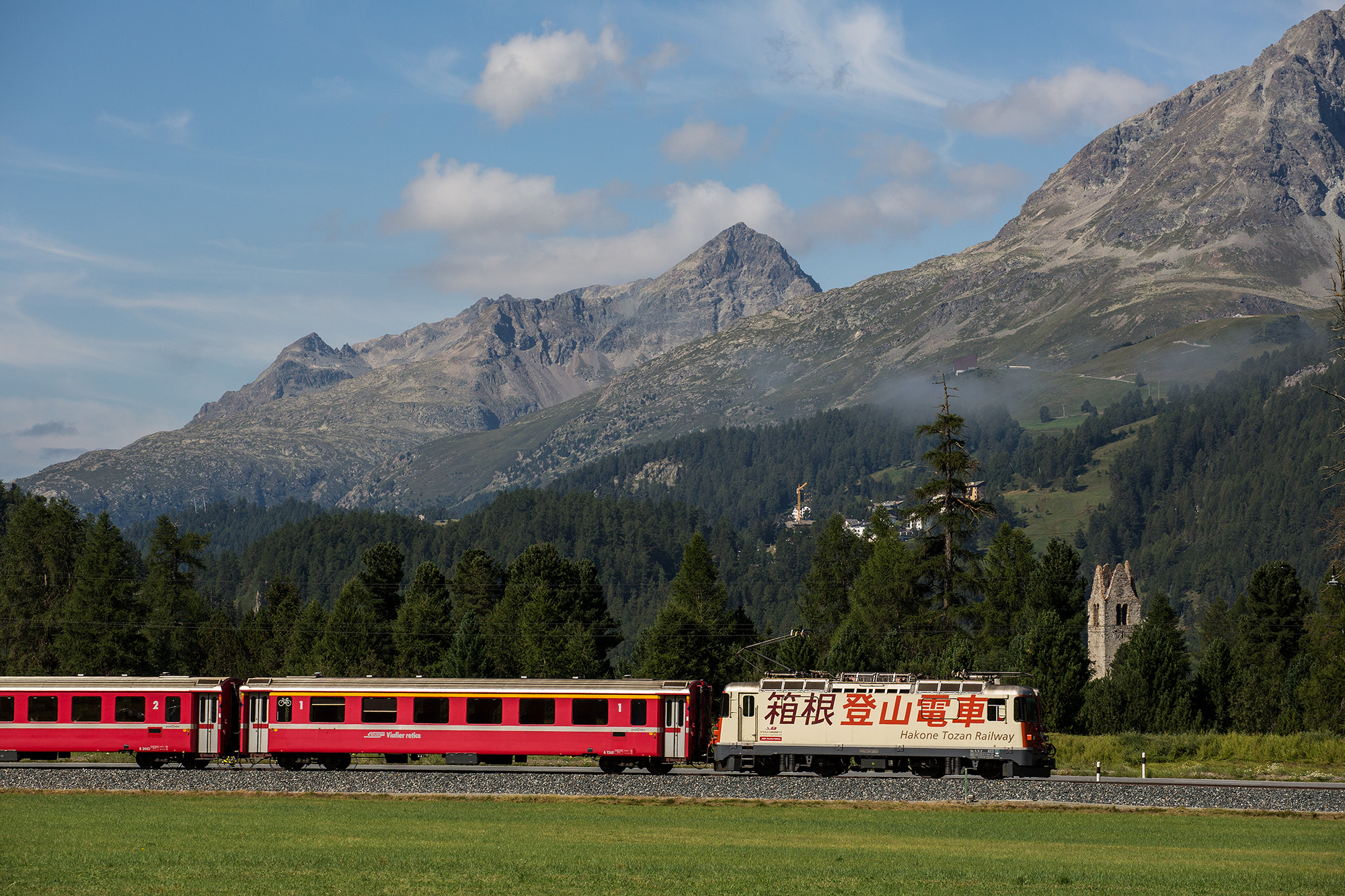
2017: Rhaetian Railway flying the colors of its Japanese counterpart (©Rhaetian Railway Inc.)
Exploring the land of Heidi
It is impossible to think of Graubüden without its iconic Rhaetian Railway – one of Switzerland’s most beautiful railways. Founded a long time ago in 1889, its network of 130 km of train lines currently serves the majority of the canton and transports millions of amazed tourists and locals every year. Harmoniously embedded in the natural landscape, the rail lines and engineering structures all add to the charm of the area serving as a backdrop for Heidi’s adventures. It can be easily discovered via the Grand Train Tour of Switzerland.
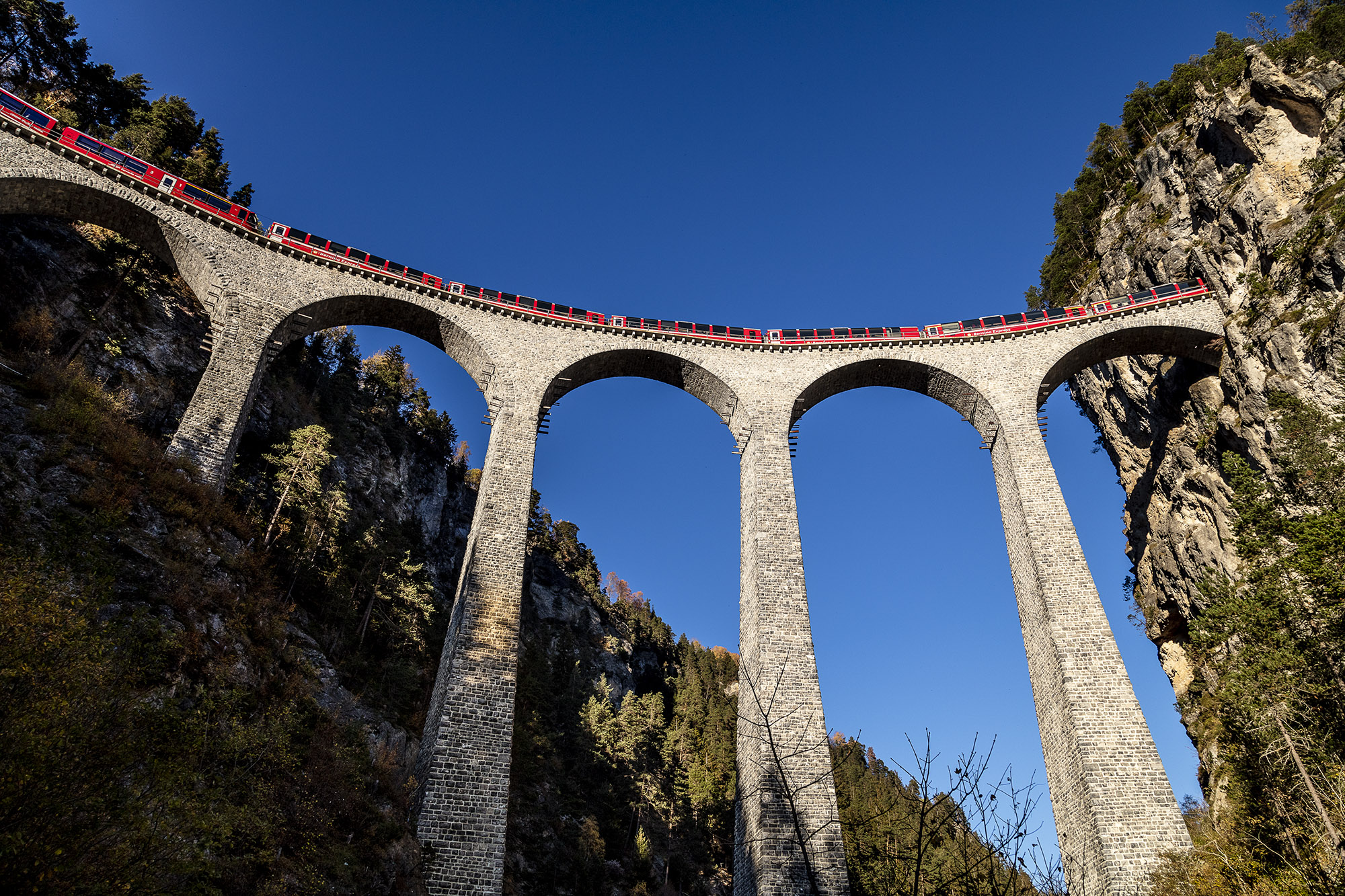
Bernina Express - Landwasser viaduct (©Rhaetian Railway Inc.)

Bernina Express - Lake Poschiavo (©Rhaetian Railway Inc.)
Among the lines of the Rhaetian Railway, the most famous is the Bernina Express, which from St. Moritz passes by the gigantic Morteratsch glacier, climbs through Europe’s highest railway Alpine pass (the 2253-metre-high Bernina), and winds down to Poschiavo along daring loops. Passengers travelling to Tirano will experience a further exclusivity in Brusio: an exposed helical tunnel.
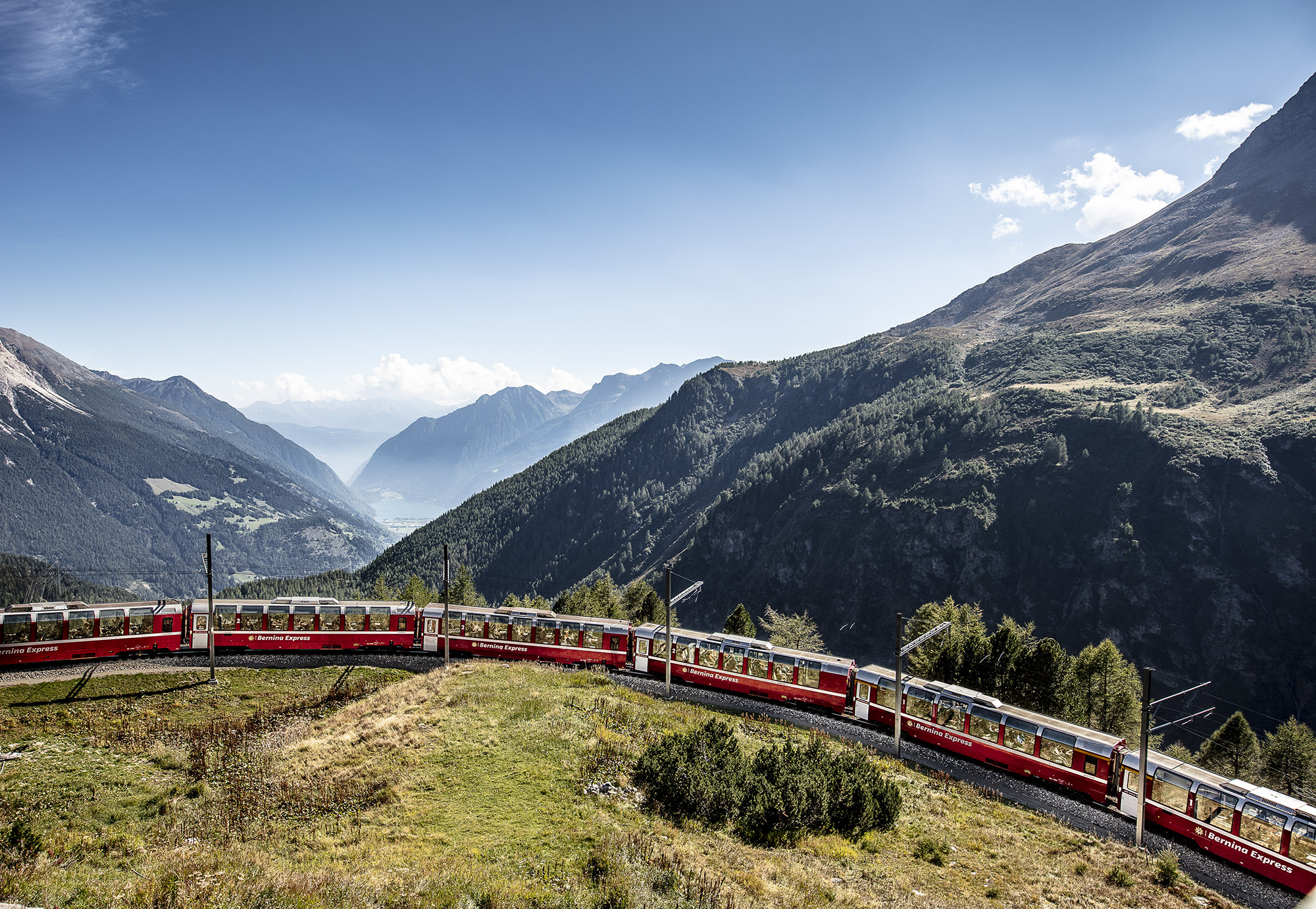
Bernina Express - Alp Grüm (©Rhaetian Railway Inc.)
While Rhaetian Railway has continued to develop, it has remained true to the spirit of those early years in one thing: it links the most beautiful locations in the mountain regions through unique railway lines. In 2008, thanks to their cultural landscape featuring pristine villages and primordial Alps, the Albula and Bernina lines were added to the UNESCO World Heritage List. All aboard – your next train for some Swiss magic will be departing soon!
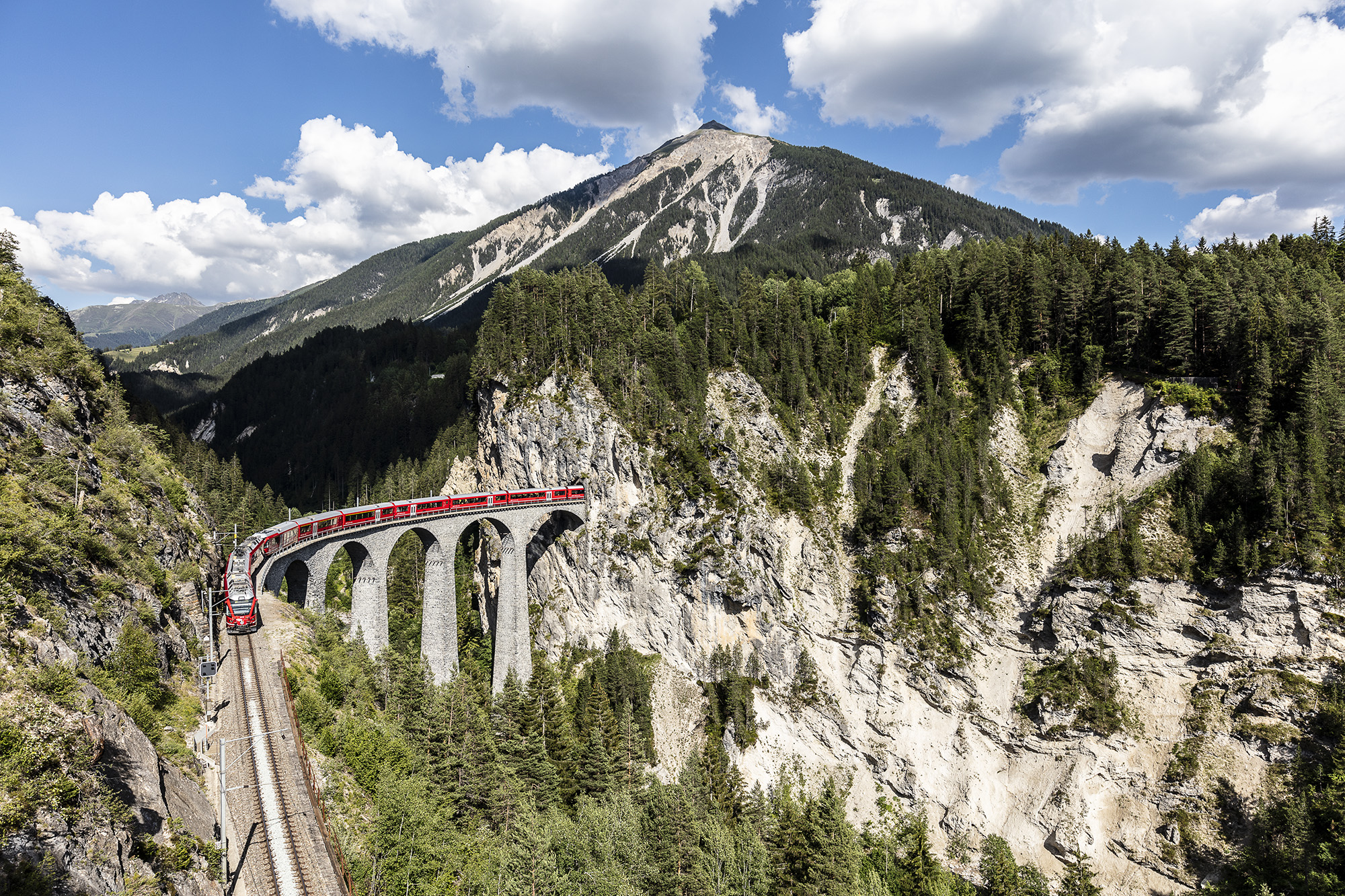
Bernina Express - Landwasser viaduct (©Rhaetian Railway Inc.)

